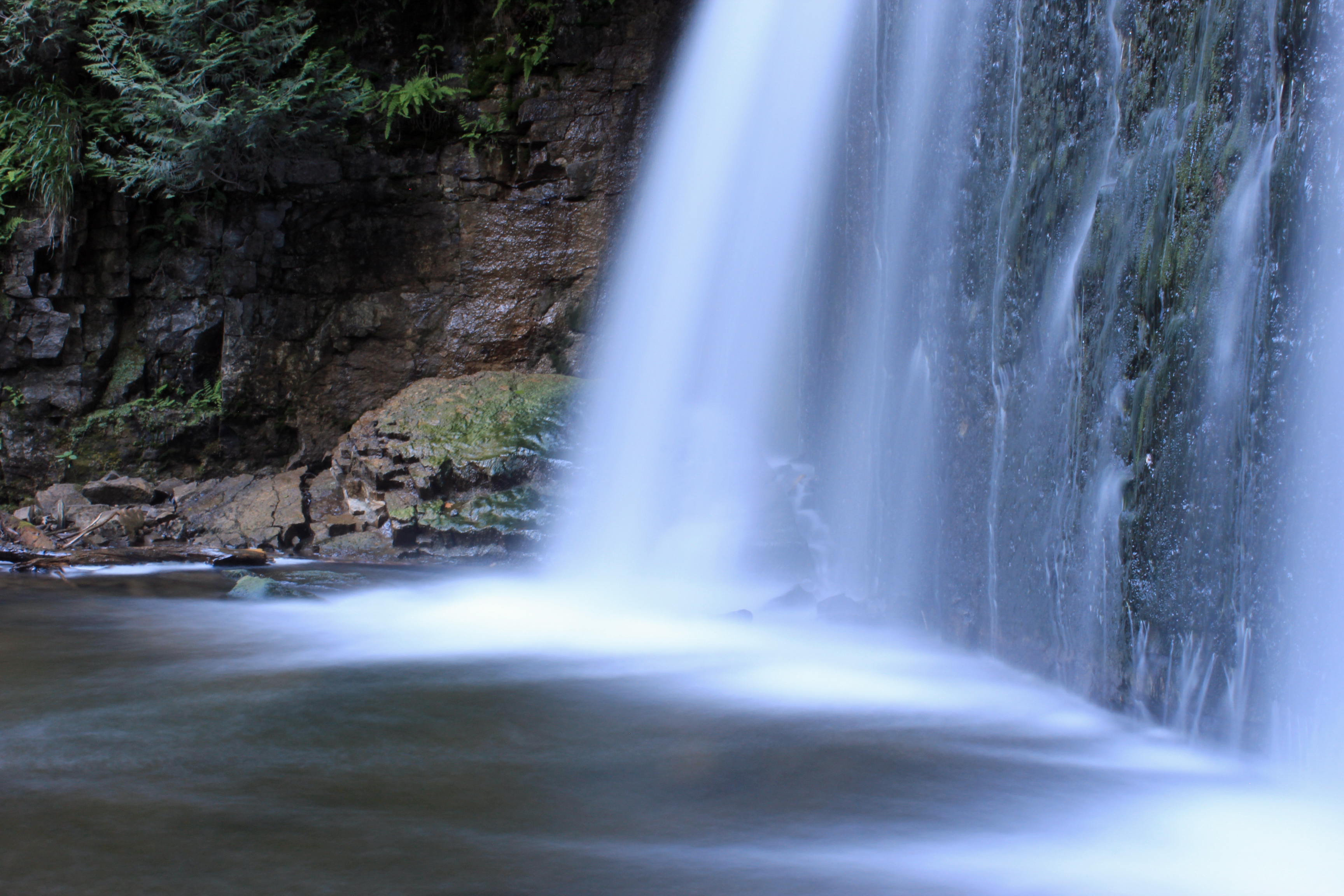One of the coolest things to do when taking pictures of water features is blur the body of water while maintaining crisp focus on the stationary foreground or background. With a DSLR camera, it’s quite easy. So easy, in fact, that an extremely non-expert like myself can do it!
We use a Canon Rebel T3i but the method of getting blurred water is mostly the same on any DSLR camera. Basically, you’re going to want to use either the Shutter Priority (Tv) setting or the Aperature Priority (Av) setting on you camera. If using the Shutter Priority, set to the slowest speed setting available. If using the Aperature Priority, set to the highest f/setting available. Check your viewscreen and adjust the settings for light. What using these settings will do is have your exposure time last as long as possible while automatically compromising all other settings to balance your image. To get more control, learn to work with the Manual Settings.
Tools you will need include:
- Tripod
- Polarizing or Neutral Density filter
- Remote shutter control
The tripod is a must. with these long exposure times, the only way for the background and foreground around the water to stay perfectly focused is to have the camera stationary on top of a tripod. The images from this article were mostly taken with the tripod standing either in the middle of the Boyne River or sitting crooked in the rocks and mud along the shore. This makes for a very unstable setting for the tripod and you simply don’t want to be touching your camera once the picture has been set up.
The filters aren’t necessary but what they do is allow less light through which allows you to set the camera for a longer exposure setting. The polarizer will tone down the glare off the water.
A remote shutter control is also not necessary but is really an inexpensive tool that ever DSLR owner should have. No matter how gently you push down on the shutter button on your camera, there will be movement. With the remote control, all physical camera movement is eliminated. The added bonus is that it allows you to get in the photo if desired.
Ideally, you want to shoot your blurred water shots at dawn or dusk when lighting is low. This reduces light, allowing for longer exposure.
Ultimately, If you’re just starting out, take this little bit of information, get some results then play with the settings to test your cameras limits and capabilities. This is the digital image age and the world of compact mass memory storage – take as many pictures as you want, then take some more!
If those times are unavailable, choose a cloudy day. The example photos in this article were all taken at Hoggs Falls, near Flesherton, Ontario, Canada. The shots were taken in the evening, about an hour before sunset. However, because the waterfall is in a semi-canyon and surrounded by forest, the lighting is usually fairly co-operative all day long.
If you plan on getting this effect on, say, Niagara Falls, you would need to pay close attention to timing as that waterfall is in direct sunlight for most of the day. Because of the artificial lighting at Niagara Falls, long exposure shots are great well after the sun goes down.
Once last thing – use manual focus. Auto-focus and long exposure are the best of friends at times. It’s best to dial it in yourself, especially when an exposure takes 30 seconds or more – it’s just a waste of your time to find the image is out of focus.

Hoggs Falls is located on the Boyne River near Flesherton, Ontario. We have a more detailed article on the location: Hoggs Falls. It should be noted that the only post-production enhancement these images had was the ‘Auto Smart Fix’ function in Photoshop Elements 8.0. However, this type of image does allow for some pretty cool effects when playing around with colour, saturation and lighting.










